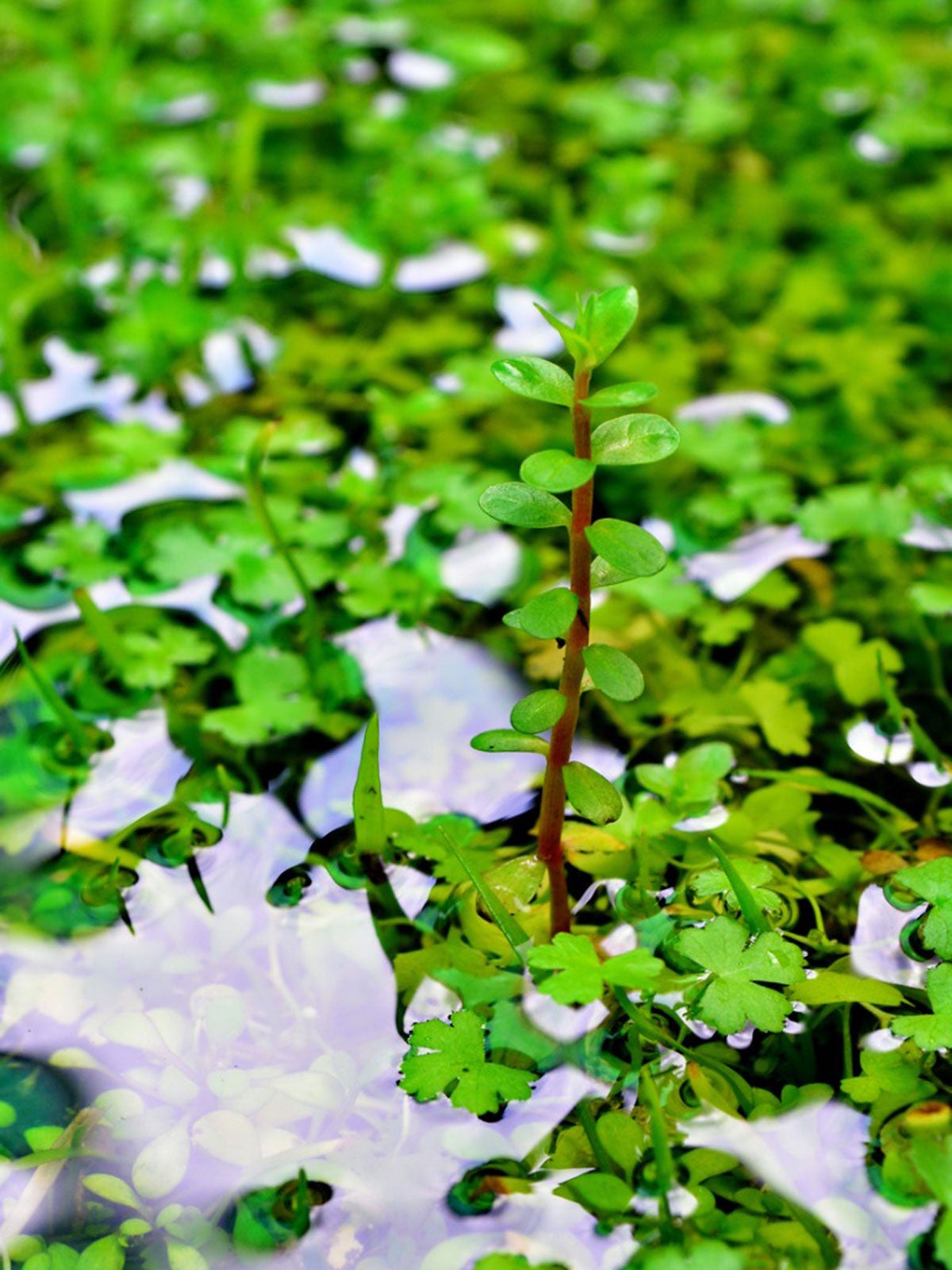Aquatic Rotala Plant: Rotala Rotundifolia Care For Aquariums


Rotala rotundifolia, commonly known as aquatic Rotala plant, is an attractive, versatile plant with small, rounded leaves. Rotala is valued for its easy growth habit, interesting color, and the texture it adds to aquariums. Read on and learn how to grow Rotala in aquariums.
Roundleaf Toothcup Info
Aquatic Rotala is native to Asia where it grows in swamps, along riverbanks, on the edges of rice paddies, and other moist locations. Aquatic Rotala plants grow in aquariums of nearly any size and are most attractive in small groupings. However, the soft, fragile stems may be damaged by large or active fish. Plants are also known as roundleaf toothcup, dwarf Rotala, pink Rotala, or pink baby tears.
Rotala in aquariums grows rapidly in bright light, especially with CO2 supplementation. The plant may turn back down when it reaches the surface of the water, creating a lush, cascading appearance.
How to Grow Rotala
Plant in aquariums in regular substrate such as small gravel or sand. Rotala in aquariums are light green to red, depending on the intensity of the light. Bright light brings out the beauty and color. In too much shade, Rotala aquatic plants may be long and lanky with a greenish yellow color.
Rotala rotundifolia care is easy. Rotala grows rapidly and can be pruned to prevent the plant from becoming too bushy. Be sure to prune as needed to allow sufficient space between plants, as fish love to swim in the jungle-like growth.
Aquarium water temperature is ideally between 62 and 82 degrees F. (17-28 C.). Check the pH regularly and maintain the level between 5 and 7.2.
Rotala is easy to propagate for more tanks or to share with aquarium loving friends. Just cut a 4 inch (10 cm.) length of stem. Remove the lower leaves and plant the stem in aquarium substrate. Roots will develop quickly.
Gardening tips, videos, info and more delivered right to your inbox!
Sign up for the Gardening Know How newsletter today and receive a free copy of our e-book "How to Grow Delicious Tomatoes".

A Credentialed Garden Writer, Mary H. Dyer was with Gardening Know How in the very beginning, publishing articles as early as 2007.
-
 Looking For Plants To Give You The Soft And Fuzzies? Try These 5 Fuzzy Leaf Plant Options
Looking For Plants To Give You The Soft And Fuzzies? Try These 5 Fuzzy Leaf Plant OptionsLovers of texture, drama, silver foliage and tactile plants will adore these special sensory garden additions. These fuzzy leaf plant options will leave you all aglow
By Susan Albert
-
 Get Ready For A Summer Of Hummers! Grow These Full Sun Hummingbird Plants and Flowers
Get Ready For A Summer Of Hummers! Grow These Full Sun Hummingbird Plants and FlowersIf you’re lucky enough to enjoy a sunny backyard, make sure you are maxing out on your pollinator opportunities and grow these full sun hummingbird plants and flowers
By Tonya Barnett